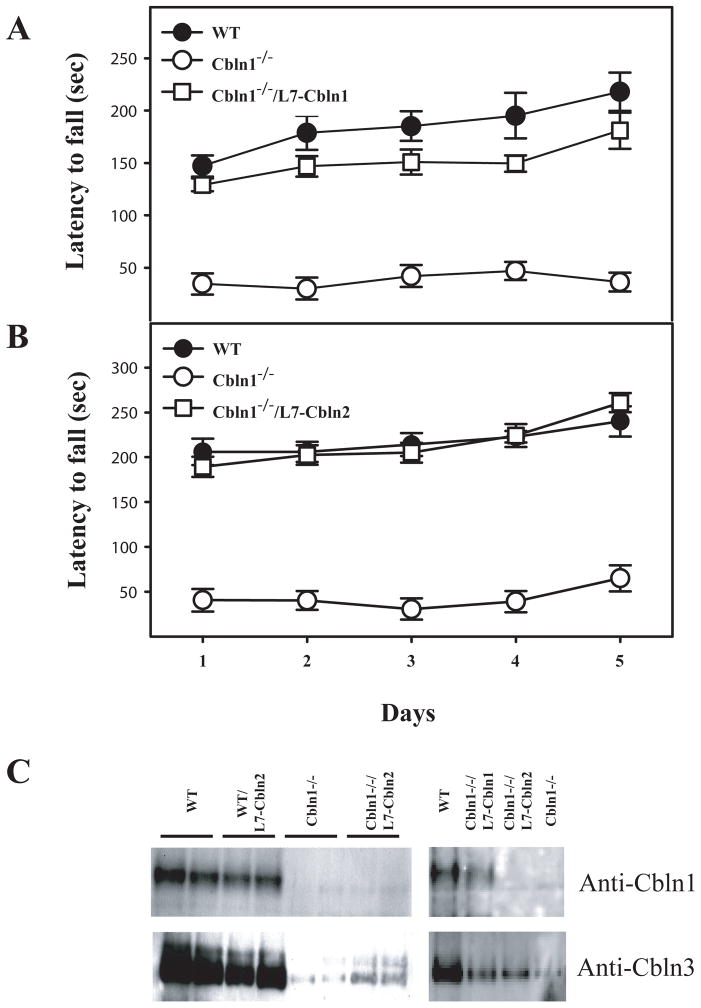Fig. 4.
Ectopic expression of Cbln1 (A) or Cbln2 (B) in Purkinje cells of Cbln1-null mice improves Rota-rod performance. Gender balanced littermates of each genotype (n = 6–8/genotype) between 45 and 55 days old were tested on a standardized accelerating Rota-rod. Wild type (WT) mice, Cbln1-null (Cbln1−/−) mice and Cbln1-null animals carrying a transgene (Cbln1−/−/L7-Cbln1; Cbln1−/−/L7-Cbln2) were tested for 5 consecutive days. The latency to fall in second for all animals of a given genotype was recorded, and data presented as mean ± SEM. Multiple comparisons between groups using the Bonferroni post-hoc test revealed that the presence of L7-Cbln1 (p = 0.0015) and L7-Cbln2 (p = 0.0003) significantly improved the performance of Cbln1-null animals. One-way ANOVA showed that only the Cbln1-null group differed significantly from all other groups. (C) Adult mouse cerebellum from the indicated genotypes was subjected to SDS–PAGE and immunoblotting with anti-Cbln1and anti-Cbln3 antisera. Both Cbln1 and Cbln3 levels were greatly reduced in the Cbln1-null cerebellum (Cbln1−/−) compared to wild type (WT) littermates. The reductions in Cbln3 levels in Cbln1-null mice were not restored to wild type values by ectopic expression of either Cbln1 (Cbln1−/−/L7-Cbln1) or Cbln2 (Cbln1−/−/L7-Cbln2). However, the Cbln1-null mice harboring a transgene had slightly higher levels of Cbln3 than Cbln1-null mice without a transgene.

